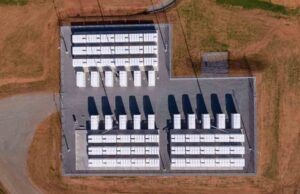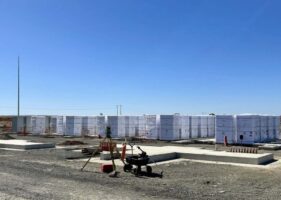Global energy technology giant Fluence has unveiled its newest battery storage product, designed to transform the way transmission and distribution networks operate on increasingly renewable powered grids.
Fluence, whose current Gridstack energy storage technology is being used in Australia for the 150MW/300MWh Hazelwood battery in Victoria, says its new Ultrastack product will be deployed as a “transmission asset,” rather than as a traditional big battery.
This means that rather than acting as a storage facility that soaks up excess renewables and then dispatches it when needed, the Ultrastack will act as a sort of transmission “shock absorber,” using “patent-pending” network and system stabilisation services including synthetic inertia and power oscillation damping.
Fluence says the Ultrastack’s advanced applications have been developed by leading power system engineers with “a deep understanding of transmission system operations.”
The company says the battery offering also promises more than 99% system uptime to meet the stringent reliability requirements of transmission system operators.
Ultimately, the broad goal of Fluence’s so-called storage-as-transmission-asset (SATA) technology is to decrease costs and complexities of managing renewable generation and limiting congestion using existing infrastructure.
“Electricity system operators are facing significant reliability and congestion challenges as power demand increases, network infrastructure requirements change, and grids transition away from power sources with synchronous generators to inverter based renewable generation,” said Fluence SVP and Chief Product Officer Rebecca Boll.
“Together, we are building the grid of the future, with several storage-as-a-transmission asset (SATA) projects already contracted or being delivered by Fluence,” Boll said.
Fluence, itself a joint venture between global energy giant Siemens and AES, whose accomplishments in Australia include two big batteries – at Ballarat and at the Lincoln Gap wind farm.
Globally and in Australia the company is well known for its IQ Bidding Application, with the number of assets using the algorithmic trading and bidding optimisation platform globally surpassing 3.4GW in 2021.
That number – at that time – included operating assets representing roughly 18% of all grid-scale wind and solar capacity in the Australian National Electricity Market (NEM) as well as one of the largest battery-based energy storage assets in the world in California.










